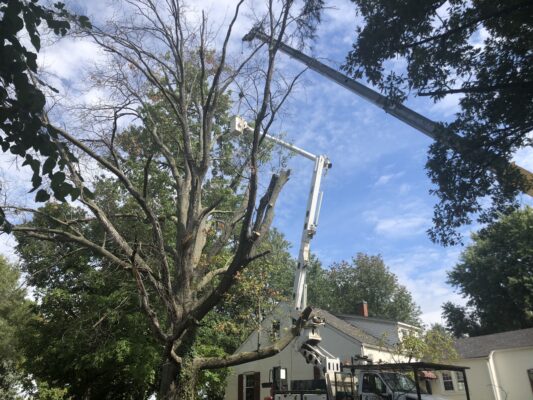Blog, Emergency Tree Care, Plant Health Care
When To Be Concerned About Structural Damage In Your Trees
Structural damage or failure in a tree due to storms, disease, or age is always a cause for concern—especially if it’s near your home. If left, it can damage property and potentially injure someone.
Up Next: Take Advantage Of Hansen’s Green Waste Recycling This Year
Don’t neglect a tree you suspect has structural damage! Keep an eye out for these signs and contact a professional if:
The Tree Has Hanging Branches
Branches hanging from your trees are the simplest way to see structural damage in your trees. In addition to the safety of your property, dead branches are harmful to the health of your trees. They can spread decay to healthy tissue and invite pests and diseases in.
The Tree’s Roots Are Damaged
Root damage to trees is hard to see but affects the overall integrity of your trees. Roots are essential in providing trees with the water and nutrients they need, so your tree can see a decline if they are damaged. Root damage can be caused by construction, digging, or salt damage. Signs include:
- Leaf wilting & dropping
- Twig and branch dieback
- Poor growth
- Leaning
The Tree Is Leaning
If your tree is leaning sharply to the side, it could be a threat to the safety of your property. Leaning trees can be a sign of root damage, and they are more at risk of wind damage and falling. If your tree is leaning, it may be best to get it professionally removed.
The Tree Is Split
Speaking of hanging branches, issues in the bark and branch unions can cause the branches to fail and cause splitting in the tree. Several things can cause a tree to split, from environmental factors like rapid freezing and thawing to fast, excess growth. While trees can often fix the problem themselves, large or deep splits should be inspected.
Contact A Professional Arborist For A Tree Risk Assessment
If you see or suspect structural damage in your trees, contact a professional ISA Certified Arborist right away. They will examine the integrity and health of your tree through a risk assessment, discuss their findings with you, and provide you with a variety of options as per the care of your tree.
For example, your arborist will be able to safely prune away weak or dead limbs and add cables or braces to the tree, if needed. Dynamic tree cabling can support limbs and help prevent tree failure. Before cabling, a professional will come out a determine if it’s the best solution. If the tree is dying, cabling may not be justified, and removal is the best option.
